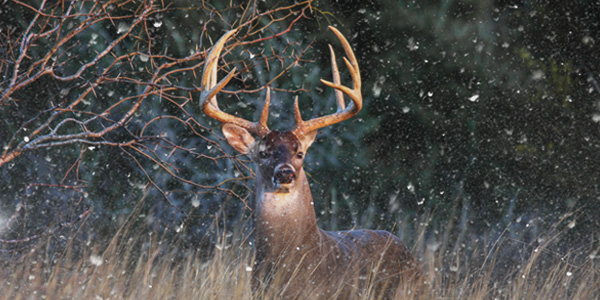What winter? Who could have predicted that people would be wearing shorts and T-shirts in Buffalo, New York, in mid-December?
Last year, the city was dealing with eight feet of snow. This year, nary a flake. No wonder the rut seems to be messed up around the country. With cold weather finally on the way, OutdoorHub lists five critical points you must know to successfully hunt the peak of the rut.
It’s here. Depending on where you live and certain conditions, the peak breeding phase of the rut usually happens around mid to late November. The most active part of the rut—in terms of breeding—usually turns out to be one of the quietest. Deer will move around less, and even then that movement will usually be restricted to certain corridors between groups. That’s one reason some hunters prefer to sit this part of this period out, but if you are considering still hitting the treestand, here are five basic facts you should absolutely know.
Bucks will be hunkered down, but that doesn’t mean they’re stationary
Common wisdom says that bucks during this phase will be hidden away with does during their 24- to 36-hour breeding cycle and you would be better off sitting at home. This is not always necessarily true—while the woods may be a little quieter, you can still catch some trophy bucks. Areas between groups of does in estrous can be high-traffic zones as bucks move from group to group. It may not be as predictable as before or after the peak, but there’s still deer to be had… [continued]



















![The Best Deer Camp Chili [VIDEO] Deer Chili Ingredients, Tomatoes, Chili Spices](/wp-content/uploads/2015/10/Deer-Chili-Deer-Camp-Recipe-218x150.jpg)
![How to Call Elk Early in the Season [VIDEO]](/wp-content/uploads/2016/08/byers003-218x150.jpg)





![Idiots Disturb Hunter: How Would You Have Handled It? [VIDEO]](/wp-content/uploads/2015/10/DSC00110-e1474487693878-100x70.jpg)
![Albino Buck Shocked to Shed His Antlers [VIDEO]](/wp-content/uploads/2015/10/AlbinoDeer-100x70.jpg)